Region-specific inhibition of 14-3-3 proteins induces psychomotor behaviors in mice
- PMID: 30643138
- PMCID: PMC6386769
- DOI: 10.1038/s41537-018-0069-1
Region-specific inhibition of 14-3-3 proteins induces psychomotor behaviors in mice
Abstract
The 14-3-3 family of proteins is genetically linked to several psychiatric disorders, including schizophrenia. Our 14-3-3 functional knockout (FKO) mice, as well as other 14-3-3 knockout models, have been shown to exhibit behavioral endophenotypes related to schizophrenia. While specific forebrain regions, such as the prefrontal cortex (PFC) and hippocampus (HP), have been implicated in schizophrenic pathophysiology, the role of these brain regions in the top-down control of specific schizophrenia-associated behaviors has not been examined. Here, we used an adeno-associated virus (AAV) delivered shRNA to knock down the expression of the 14-3-3-inhibitor transgene, thus selectively restoring the function of 14-3-3 in the forebrain of the 14-3-3 FKO mice, we found that injection of the AAV-shRNA into both the PFC and the HP is necessary to attenuate psychomotor activity of the 14-3-3 FKO mice. Furthermore, we found that acute inhibition of 14-3-3, through the delivery of an AAV expressing the 14-3-3 inhibitor to both the PFC and HP, can trigger psychomotor agitation. Interestingly, when assessing the two brain regions separately, we determined that AAV-mediated expression of the 14-3-3 inhibitor specifically within the HP alone is sufficient to induce several behavioral deficits including hyperactivity, impaired associative learning and memory, and reduced sensorimotor gating. In addition, we show that post-synaptic NMDA receptor levels are regulated by acute 14-3-3 manipulations. Taken together, findings from this study directly link 14-3-3 inhibition in specific forebrain regions to certain schizophrenia-associated endophenotypes.
Conflict of interest statement
The authors declare no competing interests.
Figures

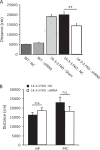
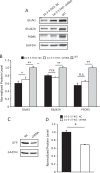
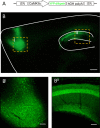
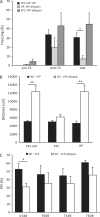
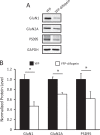
Similar articles
-
Disturbed Prefrontal Cortex Activity in the Absence of Schizophrenia-Like Behavioral Dysfunction in Arc/Arg3.1 Deficient Mice.J Neurosci. 2019 Oct 9;39(41):8149-8163. doi: 10.1523/JNEUROSCI.0623-19.2019. Epub 2019 Sep 5. J Neurosci. 2019. PMID: 31488612 Free PMC article.
-
Inhibition of 14-3-3 Proteins Leads to Schizophrenia-Related Behavioral Phenotypes and Synaptic Defects in Mice.Biol Psychiatry. 2015 Sep 15;78(6):386-95. doi: 10.1016/j.biopsych.2015.02.015. Epub 2015 Feb 19. Biol Psychiatry. 2015. PMID: 25863357 Free PMC article.
-
Transient Knock-Down of Prefrontal DISC1 in Immune-Challenged Mice Causes Abnormal Long-Range Coupling and Cognitive Dysfunction throughout Development.J Neurosci. 2019 Feb 13;39(7):1222-1235. doi: 10.1523/JNEUROSCI.2170-18.2018. Epub 2019 Jan 7. J Neurosci. 2019. PMID: 30617212 Free PMC article.
-
[Glutaminergic hypothesis of schizophrenia: clinical research studies with ketamine].Encephale. 2001 Jan-Feb;27(1):53-9. Encephale. 2001. PMID: 11294039 Review. French.
-
A computational approach to prefrontal cortex, cognitive control and schizophrenia: recent developments and current challenges.Philos Trans R Soc Lond B Biol Sci. 1996 Oct 29;351(1346):1515-27. doi: 10.1098/rstb.1996.0138. Philos Trans R Soc Lond B Biol Sci. 1996. PMID: 8941963 Review.
Cited by
-
Modulating GPCR and 14-3-3 protein interactions: Prospects for CNS drug discovery.Drug Discov Today. 2023 Aug;28(8):103641. doi: 10.1016/j.drudis.2023.103641. Epub 2023 May 24. Drug Discov Today. 2023. PMID: 37236523 Free PMC article. Review.
-
Proteins with cognition-associated structural changes in a rat model of aging exhibit reduced refolding capacity.Sci Adv. 2025 Jul 11;11(28):eadt3778. doi: 10.1126/sciadv.adt3778. Epub 2025 Jul 11. Sci Adv. 2025. PMID: 40644533 Free PMC article.
-
The 14-3-3 Protein Family and Schizophrenia.Front Mol Neurosci. 2022 Mar 14;15:857495. doi: 10.3389/fnmol.2022.857495. eCollection 2022. Front Mol Neurosci. 2022. PMID: 35359567 Free PMC article. Review.
-
LPS-induced acute neuroinflammation, involving interleukin-1 beta signaling, leads to proteomic, cellular, and network-level changes in the prefrontal cortex of mice.Brain Behav Immun Health. 2023 Jan 21;28:100594. doi: 10.1016/j.bbih.2023.100594. eCollection 2023 Mar. Brain Behav Immun Health. 2023. PMID: 36713475 Free PMC article.
-
14-3-3 proteins promote synaptic localization of N-methyl d-aspartate receptors (NMDARs) in mouse hippocampal and cortical neurons.PLoS One. 2021 Dec 28;16(12):e0261791. doi: 10.1371/journal.pone.0261791. eCollection 2021. PLoS One. 2021. PMID: 34962957 Free PMC article.
References
Grants and funding
LinkOut - more resources
Full Text Sources
Research Materials
Miscellaneous

